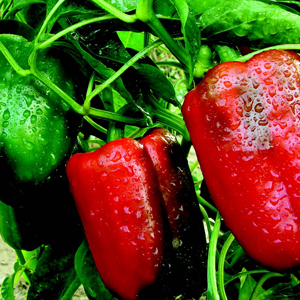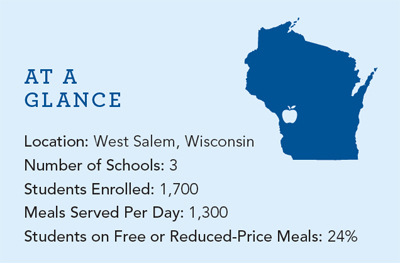West Salem School District: A School Food Success Story
The Challenge
The West Salem School District, located in rural, west-central Wisconsin, houses the elementary, middle, and high schools on one campus. The district has made considerable progress in its long-term efforts toward robust nutrition standards. Offering foods that appeal to elementary school children while still pleasing the palates of high school students is not always easy. Yet for budgetary reasons, retaining school meal participation rates across all grades is essential.
Some of the Solutions
The district has made numerous changes in recent years, including the introduction of “garden bars” featuring kale, Swiss chard, peppers, squash, raspberries, and other fruits and vegetables grown on the campus. Cafeteria staff have undergone training to teach them how to cook with a wider variety of herbs and spices, which allowed them to cut back on the use of salt. The schools only serve whole wheat breads and pastas and brown rice instead of white.
Measures of Success
To keep school meal participation rates high, the district offers healthy pre-plated meals and a la carte items to assure students have flavorful choices and a short wait time. The district has reduced wait times from five minutes to just 90 seconds—which anecdotally helps prevent high school students who are in a hurry from going off-campus for lunch. Parents also report that their children are asking for salads at home and ordering them in restaurants because they have learned to enjoy eating them at school.
Snacks and Beverages
To meet both the federal government's Healthier US School Challenge standards and district wellness guidelines, a la carte items now include yogurt parfaits and baked chips, as well as muffins and cookies that are sold in significantly reduced portion sizes. Administrators have eliminated sugar-sweetened beverages from vending machines and replaced them with water, flavored water, and zero- and low-calorie energy drinks. Additionally, the district serves only nonfat and low-fat dairy products.
The #1 Lesson Learned
District leaders have found that giving students opportunities to sample products, such as brussels sprouts, before they appear on the menu is instrumental in gaining student buy-in. Administrators and cafeteria staff report that students are much more receptive to eating such foods after they have been introduced to them through samples.
Read more "School Food Success Stories" from school districts across the nation.








